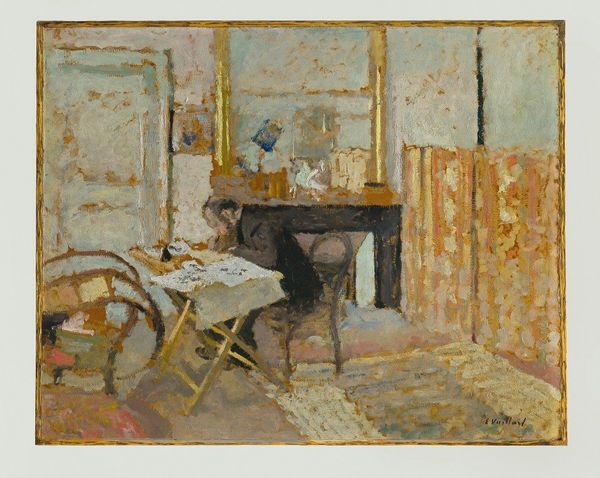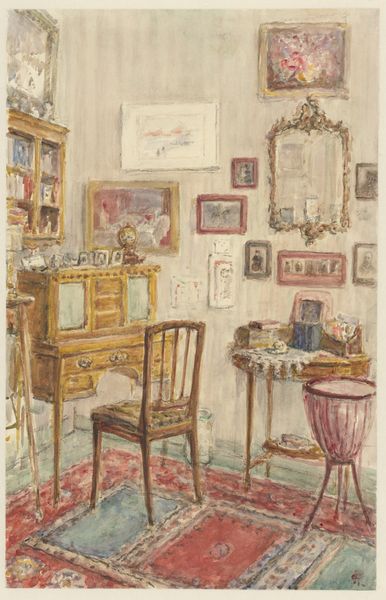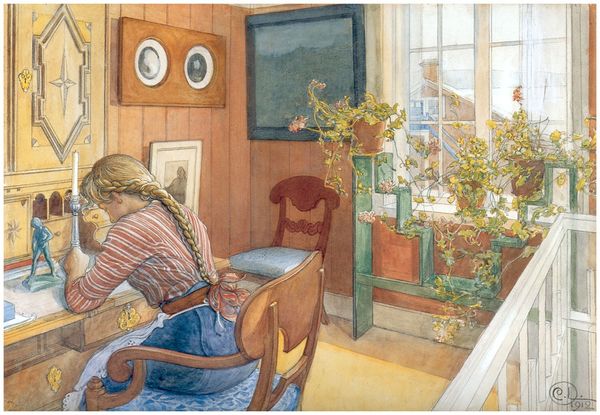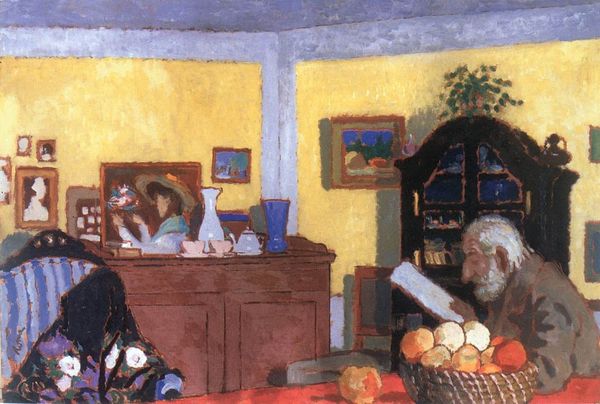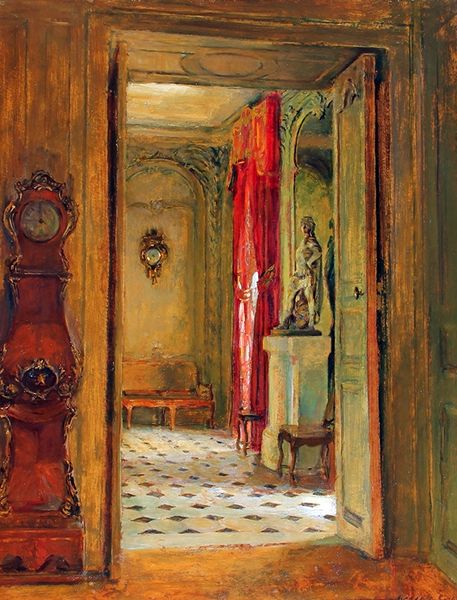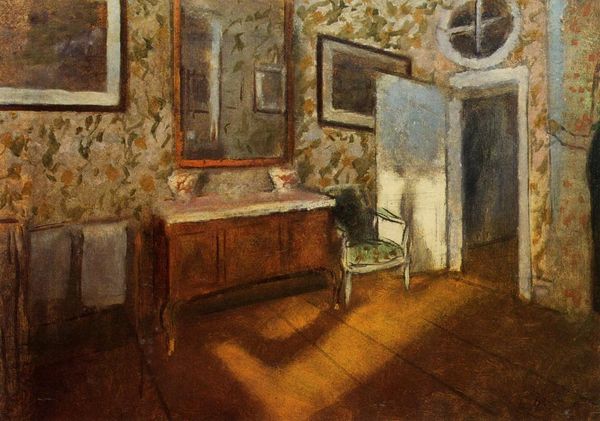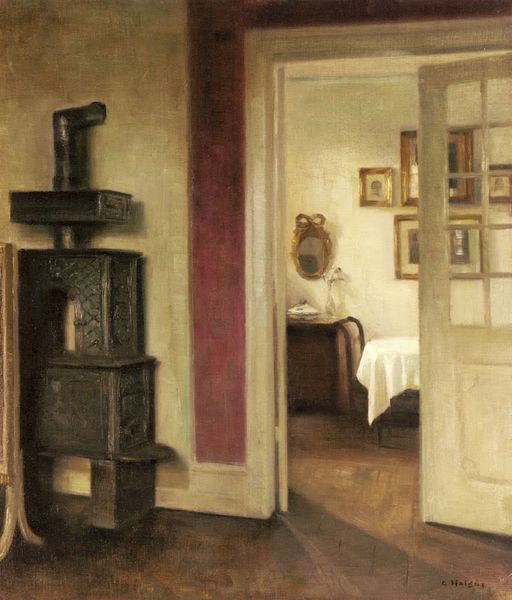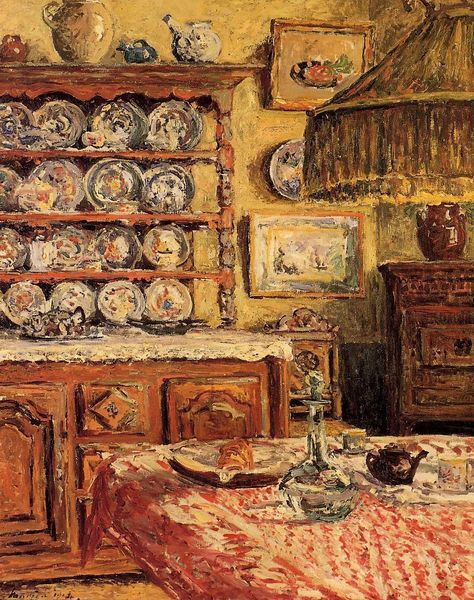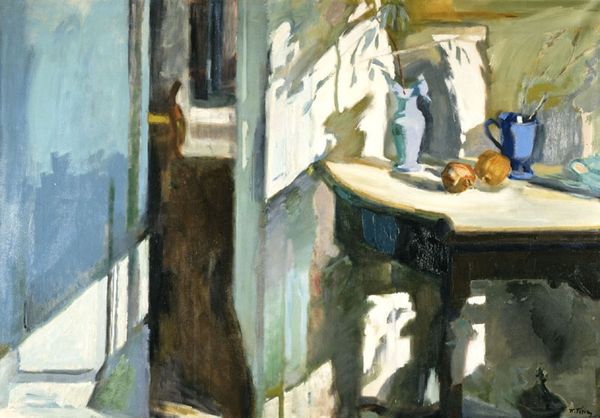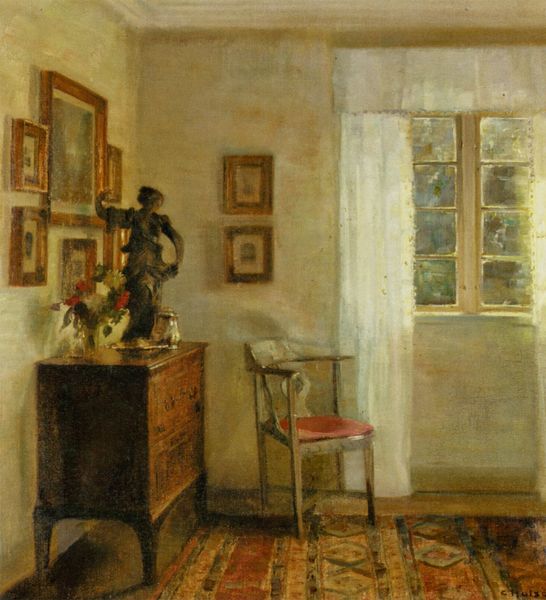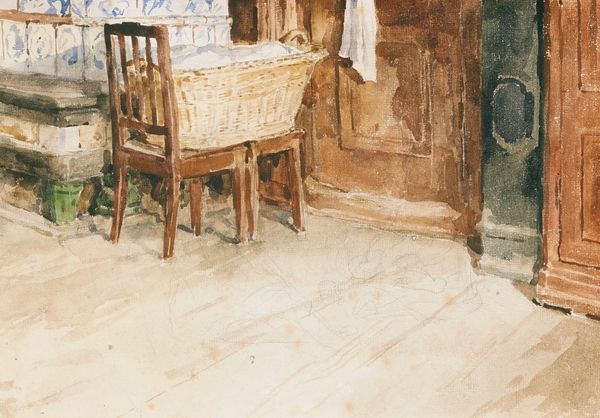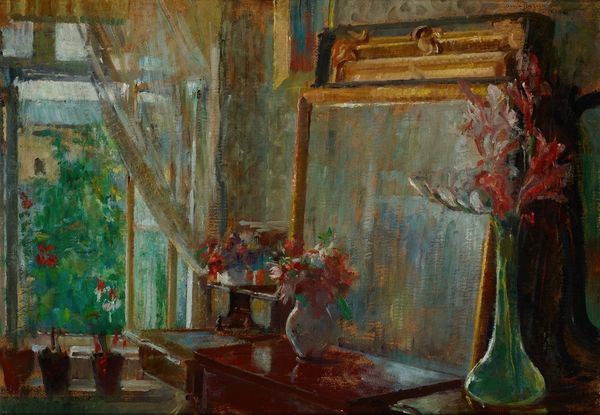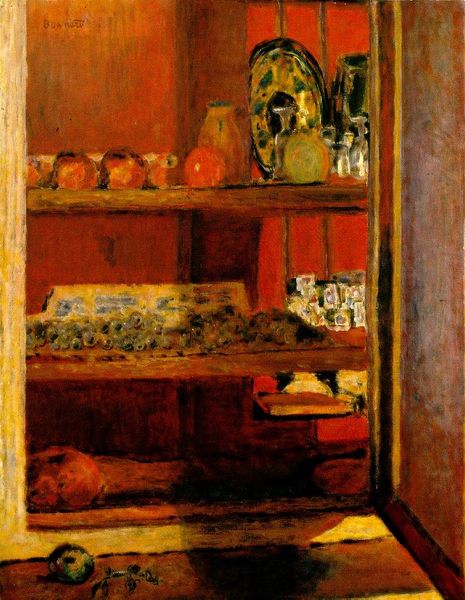
Dimensions: 104 x 68 cm
Copyright: Public domain
Curator: Carl Larsson’s "Sunday Rest," created around 1900, offers us a peek into a quiet domestic scene, preserved today at the Nationalmuseum in Stockholm. The medium is watercolor, giving it a delicate feel. Editor: It feels almost dreamlike, with its soft washes of color. There's an unmistakable tranquility that permeates the entire scene, doesn't it? Curator: Indeed. Considering Larsson's ties to the Arts and Crafts movement, one can observe a deliberate focus on the everyday object, elevated to an art form through careful craftsmanship. The sturdy table, with its ornate detailing and visible construction, becomes more than mere furniture. Editor: Absolutely. I think it’s significant that we see this scene through the lens of intimism, focusing on interior spaces. The domestic sphere, often undervalued in art history, is presented here as a legitimate subject for artistic exploration and, dare I say, celebration. Look at the person relaxing their feet on the table, are they relaxing in the aftermath of performing labour? Curator: Precisely. And looking at that figure relaxing, what stands out is the implied labour—the time and skill invested in making the fabrics, building the furniture, decorating the home, which tells of material prosperity of its owners. Editor: It speaks volumes about the social construction of rest, doesn’t it? Who has the privilege to enjoy it, and what kinds of labour make that possible? It invites us to reflect on leisure not as a given right, but as something intricately linked to social and economic power dynamics. Is the artwork meant to provide us with this comfort as viewers, and could we discuss how the identity of the audience would react to the scene in the artwork when it was displayed originally, or displayed for the first time? Curator: That’s a fascinating perspective. I hadn’t considered it quite in those terms, but you're right, thinking about the intended audience at the time, that intersection between labor, class, and gender roles. This domestic setting underscores specific identities and who has the social agency to participate or not, and in what contexts they may. Editor: Well, that kind of dialogue is crucial, I believe. To see artworks not in isolation, but as integral parts of broader social narratives, to reflect on the representation in domestic interiors to provide a starting point. It broadens our understanding and, hopefully, fuels empathy. Curator: Agreed. "Sunday Rest," far from a simple snapshot, it opens avenues to examine societal values concerning labor, domesticity, and social status that continues to provoke new considerations when encountered.
Comments
No comments
Be the first to comment and join the conversation on the ultimate creative platform.
